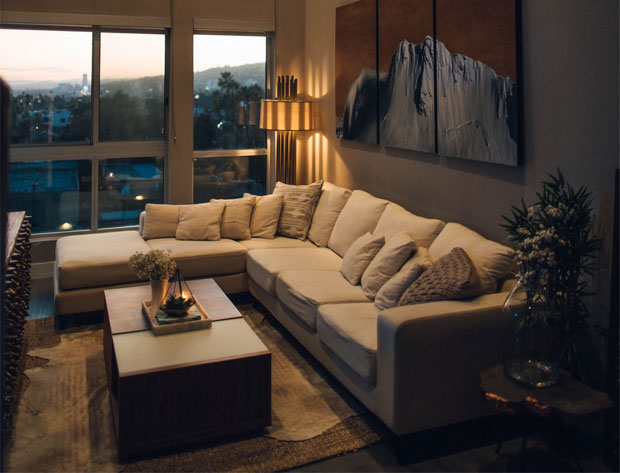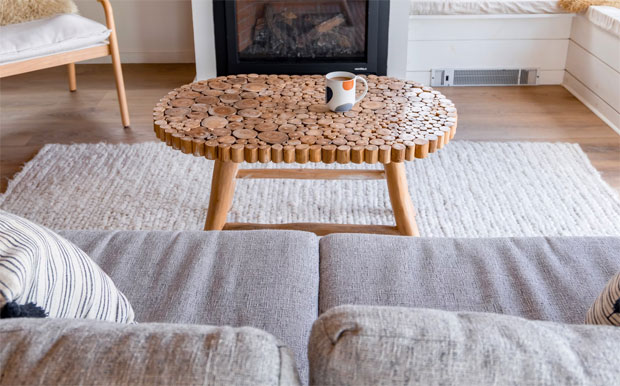How to Create a Calmer Space with the Right Acoustics

How to Create a Calmer Space with the Right Acoustics
Do your home’s living spaces sometimes feel like a church or a tunnel – where sound and conversations echo off the walls? Or perhaps it’s your home office where sounds like a constant hum is distracting you when you are trying to focus on your work? If you want to create a calmer space, you can achieve this with the right acoustics. In this article we’ll explore how important acoustics are and how to make your home more enjoyable with the right acoustic solutions.
You Might Need to Think About Acoustics
Poor room acoustics can quickly turn a space intended for focus or rest into an uncomfortable one. The good news is that improving the acoustics in your home doesn’t require a major renovation—just a few smart changes.
Acoustics Matter More Than You Think
When we design a space in our home, we often focus on how the room looks. Most people don’t think about sounds when choosing their décor, but it’s just as important. If you have ever been in a room that’s so echoey that it feels like every noise or word is bouncing back at you, you will understand. It’s not only very irritating, but it can also make you feel disconnected and make it hard for your to focus or relax.
If you take the time and make the effort to improve the acoustics of a room, you can soon create a space that feels calm, comfortable, and peaceful. A room where you can enjoy having a conversation with your loved ones, or listen to music, or simply sit in quiet without battling constant noise reverberation.

Exploring the Key Players in Acoustics – Absorption and Diffusion
Good room acoustics come down to two main things: absorption and diffusion. When you think of absorption, think of soundproofing products. You can use soft materials like rugs, curtains, or acoustic panels to soak up sound waves. On the other hand, diffusion scatters the sound waves evenly around the room, preventing them from concentrating in one spot. By combining these two techniques, you can make a room sound more balanced and comfortable.
So how can you achieve this? For example, you can add sound-absorbing panels to your walls to reduce echoes, and also add a bookshelf full of items or a textured wall covering to help diffuse sound waves. By doing this, you can make the room feel alive and cosy, but not noisy.
How Many Sound-Absorbing Panels Should You Use?
This is a very common question, and unfortunately, there’s no hard rule. A good place to start is to try to cover around 30% of the room’s floor area with sound-absorbing materials. This can include things like curtains, rugs, and acoustic panels. Then you can always add more if needed. Starting smalls gives you the opportunity to get a sense of how the acoustics improve without overwhelming the room.
For example, if the room is around 50 square metres, you can start by covering around 15 square metres with sound-absorbing materials. After that, you can adjust if you feel that you need more.

Where Should Sound-Absorbing Panels Go?
Next, let’s talk about placement of sound-absorbing panels. Instead of covering every available surface, focus on where the sound bounces the most. You can figure this out by walking around the room clapping your hands. Where you hear the most echo is where the panels should go.
For living rooms, sound tends to reflect between the walls behind the sofa and your TV or speakers. To improve the acoustics in your living room, try covering at least a quarter of these walls with acoustic panels. Ceilings are also prime spots for echoes, so a good solution is adding ceiling tiles or sound-absorbing lamps which can make a noticeable difference.
How to Make Acoustic Treatments Look Good
The great thing about modern acoustic treatments is that they don’t have to be ugly or industrial-looking at all. In fact, many acoustic panels now come in a range of sleek, stylish designs that complement your décor.
If you’re looking for a discreet solution, you can choose minimalist acoustic panels in neutral tones that blend into the background. Or, if you’re looking for more of a statement design, go bold with geometric designs that double as wall art. You can even get sound-absorbing lamps, which are made from materials like felt that are both functional and chic.
And don’t forget about regular soft furnishings such as heavy curtains, thick rugs, and upholstered furniture. These everyday items do wonders for absorbing sound, all while making the room feel cosy and welcoming.

Other Budget Fixes for Improving Your Home’s Acoustics
Not feeling quite ready for acoustic panels? That’s okay! You can improve acoustics with simple, everyday items:
- Heavy curtains: Choose thick, floor-length curtains that will absorb sound and soften echoes, especially in rooms with large windows.
- Rugs and carpets: The thicker the better. Add a plush rug that will not only absorb sound but also warm up your space.
- Furniture placement: Strategically think about where to place furniture, like sofas or bookshelves. This can break up sound waves and prevent them from bouncing around.
Plus, something as simple as adding a large bookcase filled with books in the room can also help diffuse sound, making your room feel more comfortable.
Room-Specific Soundscaping
Every room in your home has different acoustic needs. For example, for your home office, focus on minimising distractions. Do this by placing soft materials or a bookshelf near your desk to absorb sound and create a quieter workspace where you can concentrate.
In spaces where you watch TV or listen to music, create a balance between sound absorption and diffusion. You can achieve this by putting up acoustic panels behind your TV combined with soft furnishings for create a great sound experience.
An area that is often a source of echoes is staircases and this is due to the parallel walls. In these areas, you can add wall art, shelves or even textile hangings to break up soundwaves to reduce the echo.

Eco-Friendly Acoustic Solutions
Looking for eco-friendly ways to make your home quieter? Consider using sustainable acoustic panels made from eco-friendly materials such as wool, recycled polyester, or cork. These materials are highly effective at absorbing sound while reducing your environmental impact too. A win-win for your home and the planet.
Better Acoustics, Better Living
At the end of the day, good acoustics make your home more enjoyable to live in and that’s always a good thing. Whether you’re looking to achieve clearer conversations, less stress, or a better sound experience while watching movies, acoustics play a major role in the way we feel about our spaces. No one wants to live in an echo chamber—and you don’t have to. Start small by experimenting with a few acoustic improvements and you’ll notice how much more pleasant your home can feel.
By blending smart acoustic solutions with stylish design choices, you can transform your home into a quieter, more comfortable haven without the need for any heavy renovations. So go ahead, give your walls and ceilings some acoustic love, and enjoy the newfound peace and calm in your space.
Collaboration.




